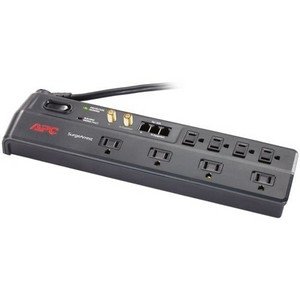Yes, it has.
Tripp lite Isobar is/was one of the best surge protectors out there; it has all the best in SPD design. A problem I've seen has been in this one tripp Lite Model, made in China, it was so shabbily made it makes me wonder about all their products. This model is rated 5 stars by Amazon buyers, but nothing is about its surge protection capacity, but the layout of the sockets!

Isobar is now made in USA, but if you buy one open it and check the construction as Dave does with many electronic items. My guess is USA QC is much better given our laws.
In contrast, I inspected over 10 various APC models, and not one had a QC defect. So, I now buy all APC, if you compare price, APC is bang for buck, but I still open the casing

A single key feature to look for in buying any SPD is screw on covers, to allow you inspect its guts. Many commodity SPD, usually Belkin, Phillips and other general consumer electronics names, now glue the case shut, absolutely stay away from those.
Quick summary of the components:
The thick blue colored MOV on the left end of the PCB are likely built in thermal fused MOVs, while the thinner MOV on the right end, are standard MOVs. A typical design is to put a thermal fuse fairly close to the MOV so it will catch the heated MOV and trip. The various inductors are just filters to cut down on various noise sources, like switching PSU, that permeate line voltage these days. Good to have, and standard issue in $30 up SPDs. All my APC with similar filter out the control signals of my X-10 home automation system


The Isobar claims it has isolated filters and SPD for some banks within their SPD, those do work in suppressing noise of some value in high end audio systems.
My biggest critique is the price. Its very close to low end Panamax SPD, which offer a voltage regulator that shuts down the entire SPD should voltages exceed parameters. You can check it out.
the metal container used to be a massive plus, when SPDs didn't have fuses to blow too and limit the flash burn of the MOV, which could penetrate the plastic housing and potentially torch your sofa, or ignite lint and dust, and start fires. It becomes more of an issue with higher joule ratings, because the potential energy released by a high joule rated MOV is more violent than a lesser one.
Beware Joule rating, its useless:
The MOV in the PCB appear in parallel suggests they are on the same line, but can't say for sure, paralleling MOV is a ploy used to increase the joule rating protecting a particular line, such as line-neutral, but its nearly useless electrically, its mostly for truth in marketing. The reason is, parallel MOV do not have identical impedance, so faced with a voltage spike or overvoltage, they will not conduct at the exact same trigger voltage, so likely one work first before the others. Since that MOV will go into near zero impedance, this single MOV will likely blow before the others have a chance to act, its not like having parallel resistors. The whole idea of high joules is allow the SPD to take a beating and still live for another day, rather than blowing like a fuse and dying. Alas, every high voltage insult reduces the life of the MOV, so the same 'sensitive' MOV in the parallel set will eventually be the first to fail, in response to multiple overvoltage or transients.
Its better to have a lifetime warranty on the whole device, a good company to honor that warranty, and a single standard MOV like the PER7 design, than pay for multiple MOV in parallel when protecting power lines and grounds.
These days, the competing APC model to the Isobar shields the MOV in a plastic blast shield inside the all plastic casing, UL testing says this is enough, but only a field trial will tell for sure. The failure I had demonstrates in real world use, how valuable the thermal fuse is, and that plastic seems to be enough. A competing APC model sells for $20-30, so for a single Isobar you can get 2-3 APC:

See the next post for the final post mortem on my APC PER7.
So what do you think of this Tripp Lite strip available at amazon?
http://www.amazon.com/Tripp-Lite-ISOBAR8ULTRA-8-Outlet-Protector/dp/B0000511U7
Looks to have most of the features talked about in this thread, no?
Scott